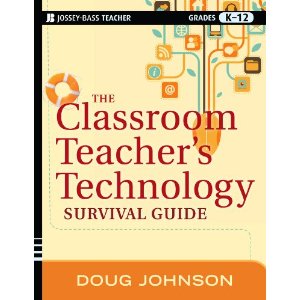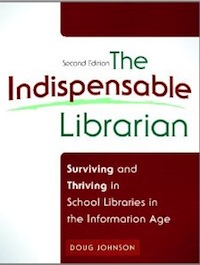Minnesota Can’t Afford to Skimp on School Libraries
What’s New in Science? or Why School Library Libraries Need Funding
Published in the Minneapolis Star-Tribune as “Minnesota Can’t Afford to Skimp on School Libraries,” April 7, 1994
Funding for school libraries has to be one of the least sexy issues ever written about in these pages. It is an issue, however, that is of vital importance to the future of Minnesota’s children.
My first job in Minnesota began in 1989 in a small public high school library. When I began, the shelves were overflowing with books; every inch of every case was jammed full. There weren’t many bright dust jackets or current fiction titles I recognized on my brief tour when I interviewed, but nearly 14,000 books! That’s nothing to sneeze at for a small high school.
It wasn’t until I began trying to pull materials for book talks and class research that I discovered how horribly dated the books really were. Many materials were physically deteriorating (which really was something to sneeze at) and sexist titles like The Boy’s First Book of Radio and Television, Boy Electrician, Boy’s Book of Rifles, Boy’s Book of Verse, Boy’s Book of Great Detective Stories, Boy’s Book of Tools, Boy’s Book of Turtles and Lizards, Boy’s Book of King Arthur, Boy’s Book of Outboard Boating, and Boy’s Book of Sherlock Holmes.
There were no “Girl’s Books” of anything
Most of the geography books were purchased in the sixties, as were nearly all the books in science and technology. Fran Tarkington was the most contemporary sports figure in the biography collection. Many materials had not been checked out for years. The record breaking shelf-sitter was last circulated November 21, 1941, just before Pearl Harbor.
How could one blame students for not using a book like 1960’s What’s New in Science? when the first picture in the book shows a Curtiss-Wright air car, looking like a levitating parade float with Studebaker bumpers. The filmstrip title Preparing for the Jobs of the ‘70’s showed that the non-print collection was no newer.
Even after I tossed half the collection, it still wasn’t young, but at least it was no longer old enough to buy beer.
Unfortunately, studies show that this library is the rule in Minnesota schools, not the exception.
In the Mankato Schools we spend some serious money on library materials. This allows us to replace, every year, about 5% of our books, purchase a wide assortment of magazines, and offer reference materials in electronic formats. As a result we have wonderful, well-used libraries.
In our libraries it’s easy for children to find books which interest them at their reading level. Their eyes are drawn to the bright covers and contemporary themes. Older students find the books and magazines they need for class assignments which require research and outside reading. Our teachers use whole language instruction in which reading and writing are taught using children’s literature and factual books with personal appeal to beginning readers. Children are learning not just how to read, but to love to read.
And there is a very pragmatic reason to develop the love of reading. As Ken Davis a professional writing consultant to businesses explains, “If a child or adult hasn’t done enough self-motivated reading, no amount of teaching or training will make him or her an effective writer.”
So why am I worried about funding for my schools’ good libraries? Two reasons.
New technologies are straining budgets which in the past have only needed to support print collections. Internet fees next year will reduce the amount of money we have to maintain our print collections by over 10%. Children, teachers, and parents are clamoring for the wonderful new CD-ROMs available like the electronic encyclopedias which pronounce difficult words and make animals and volcanoes move and roar, or huge data bases of effortlessly searched newspaper and magazine articles, .
The second reason I am concerned is because it is increasingly difficult to secure a piece of the funding “pie” for our libraries. The amount of money coming to schools has not increased for four years. Expenses - teacher salaries, smaller class sizes, text books, supplies, and everything else - have. In these penny-pinching times, even good media programs are in real danger.
Education can no longer be a single teacher and a single textbook trying to dispense all the knowledge children need to know for the rest of their lives. Half of what this year’s college computer science graduate learned will no longer be valid in 18 months. 90% of what medicine knows about the human brain has been discovered in the past 10 years. Most of our children will work in adult jobs for which the descriptions do not yet exist. Teachers need the tools which help children learn how to learn and develop a passion for learning. That’s what school libraries are all about - providing these tools. And libraries can’t effectively operate without adequate resources.
Parents know how important educational resources are to their children. More software and personal computers were sold to homes last year than to businesses. The children’s book publishing industry is booming, and the circulation rate of children’s materials in public libraries is higher than ever.
The future will not be kind place for the children who lack learning skills. They will find themselves behind in the international race for good schools and good jobs. My children, Mankato’s children, Minnesota’s children, can’t fall behind.
Adequately funded school libraries are necessary to keep our children in the race.
Published in the Minneapolis Star-Tribune as “Minnesota Can’t Afford to Skimp on School Libraries,” April 7, 1994
Funding for school libraries has to be one of the least sexy issues ever written about in these pages. It is an issue, however, that is of vital importance to the future of Minnesota’s children.
My first job in Minnesota began in 1989 in a small public high school library. When I began, the shelves were overflowing with books; every inch of every case was jammed full. There weren’t many bright dust jackets or current fiction titles I recognized on my brief tour when I interviewed, but nearly 14,000 books! That’s nothing to sneeze at for a small high school.
It wasn’t until I began trying to pull materials for book talks and class research that I discovered how horribly dated the books really were. Many materials were physically deteriorating (which really was something to sneeze at) and sexist titles like The Boy’s First Book of Radio and Television, Boy Electrician, Boy’s Book of Rifles, Boy’s Book of Verse, Boy’s Book of Great Detective Stories, Boy’s Book of Tools, Boy’s Book of Turtles and Lizards, Boy’s Book of King Arthur, Boy’s Book of Outboard Boating, and Boy’s Book of Sherlock Holmes.
There were no “Girl’s Books” of anything
Most of the geography books were purchased in the sixties, as were nearly all the books in science and technology. Fran Tarkington was the most contemporary sports figure in the biography collection. Many materials had not been checked out for years. The record breaking shelf-sitter was last circulated November 21, 1941, just before Pearl Harbor.
How could one blame students for not using a book like 1960’s What’s New in Science? when the first picture in the book shows a Curtiss-Wright air car, looking like a levitating parade float with Studebaker bumpers. The filmstrip title Preparing for the Jobs of the ‘70’s showed that the non-print collection was no newer.
Even after I tossed half the collection, it still wasn’t young, but at least it was no longer old enough to buy beer.
Unfortunately, studies show that this library is the rule in Minnesota schools, not the exception.
In the Mankato Schools we spend some serious money on library materials. This allows us to replace, every year, about 5% of our books, purchase a wide assortment of magazines, and offer reference materials in electronic formats. As a result we have wonderful, well-used libraries.
In our libraries it’s easy for children to find books which interest them at their reading level. Their eyes are drawn to the bright covers and contemporary themes. Older students find the books and magazines they need for class assignments which require research and outside reading. Our teachers use whole language instruction in which reading and writing are taught using children’s literature and factual books with personal appeal to beginning readers. Children are learning not just how to read, but to love to read.
And there is a very pragmatic reason to develop the love of reading. As Ken Davis a professional writing consultant to businesses explains, “If a child or adult hasn’t done enough self-motivated reading, no amount of teaching or training will make him or her an effective writer.”
So why am I worried about funding for my schools’ good libraries? Two reasons.
New technologies are straining budgets which in the past have only needed to support print collections. Internet fees next year will reduce the amount of money we have to maintain our print collections by over 10%. Children, teachers, and parents are clamoring for the wonderful new CD-ROMs available like the electronic encyclopedias which pronounce difficult words and make animals and volcanoes move and roar, or huge data bases of effortlessly searched newspaper and magazine articles, .
The second reason I am concerned is because it is increasingly difficult to secure a piece of the funding “pie” for our libraries. The amount of money coming to schools has not increased for four years. Expenses - teacher salaries, smaller class sizes, text books, supplies, and everything else - have. In these penny-pinching times, even good media programs are in real danger.
Education can no longer be a single teacher and a single textbook trying to dispense all the knowledge children need to know for the rest of their lives. Half of what this year’s college computer science graduate learned will no longer be valid in 18 months. 90% of what medicine knows about the human brain has been discovered in the past 10 years. Most of our children will work in adult jobs for which the descriptions do not yet exist. Teachers need the tools which help children learn how to learn and develop a passion for learning. That’s what school libraries are all about - providing these tools. And libraries can’t effectively operate without adequate resources.
Parents know how important educational resources are to their children. More software and personal computers were sold to homes last year than to businesses. The children’s book publishing industry is booming, and the circulation rate of children’s materials in public libraries is higher than ever.
The future will not be kind place for the children who lack learning skills. They will find themselves behind in the international race for good schools and good jobs. My children, Mankato’s children, Minnesota’s children, can’t fall behind.
Adequately funded school libraries are necessary to keep our children in the race.
Posted on Sunday, July 8, 2007 at 10:52AM
by
 Doug Johnson
in Minneapolis Star Tribune editorial
|
Doug Johnson
in Minneapolis Star Tribune editorial
|
 Post a Comment
Post a Comment





Reader Comments